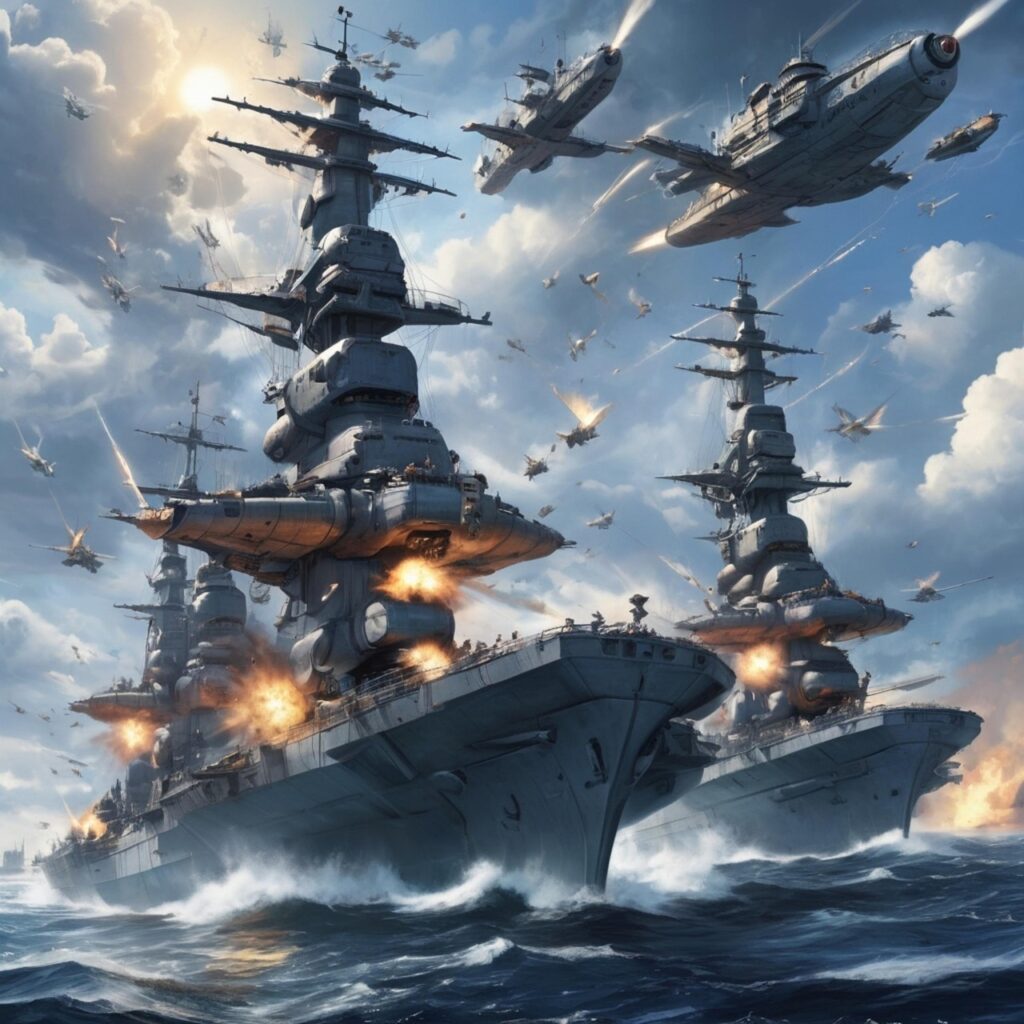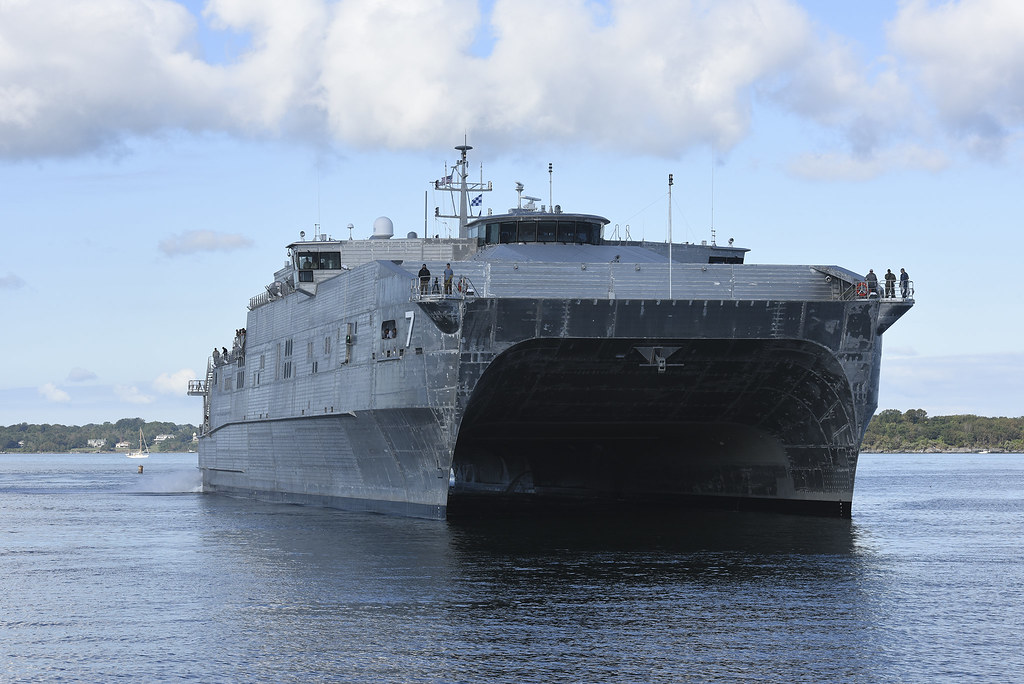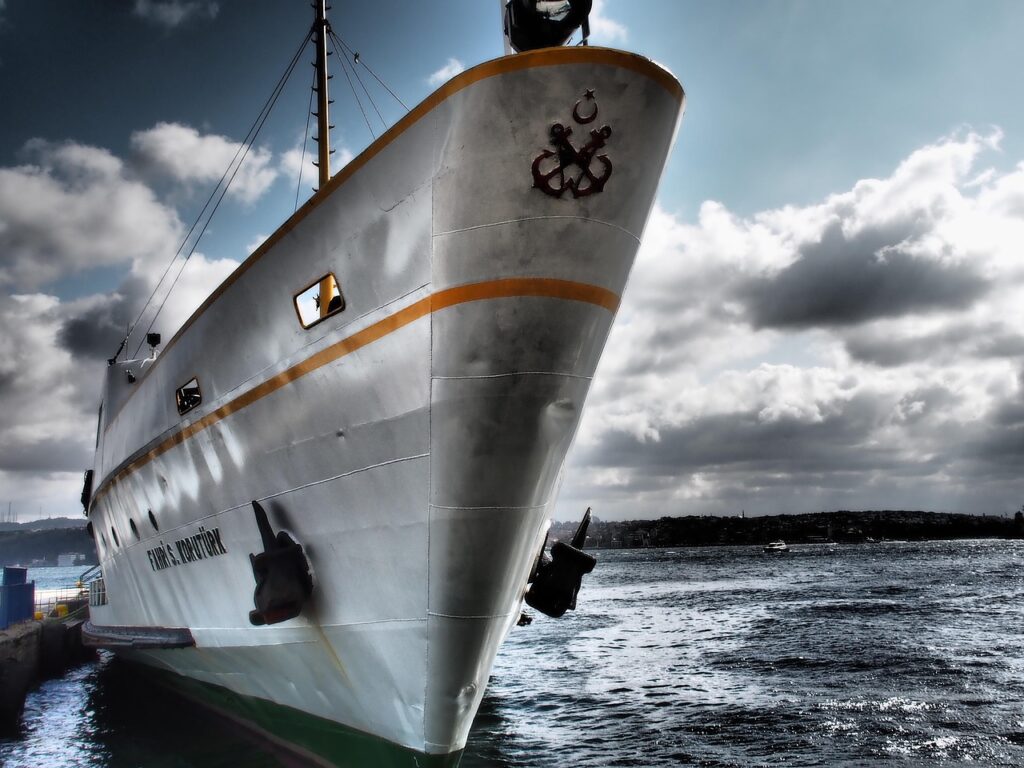
The sheer scale of moving billions of dollars’ worth of heavy military equipment across vast oceans is an undertaking of monumental complexity, a challenge that requires an intricate blend of logistical prowess, technological innovation, and unwavering dedication. This isn’t merely about loading cargo onto a ship; it’s about projecting national power, sustaining global operations, and ensuring that American forces, and often those of allies, have precisely what they need, wherever and whenever they need it. It’s a logistical ballet performed on the world stage, with precise coordination and an almost invisible efficiency that belies the immense forces at play.
At the heart of this colossal effort is the United States Military Sealift Command (MSC), an organization that stands as the Department of Defense’s single managing agency for ocean transportation needs. Since its inception on July 9, 1949, initially as the Military Sea Transportation Service (MSTS) before its renaming in 1970, MSC has been entrusted with the critical responsibility of providing sealift and ocean transportation for all U.S. military services, alongside other government agencies. This vital command ensures that everything from tanks and helicopters to food, fuel, and medical supplies reaches its destination, enabling military operations from humanitarian aid missions to full-scale combat deployments.
What truly sets MSC apart is its unique operational model, blending military oversight with a predominantly civilian maritime workforce. Its fleet comprises a core of Navy-owned ships, augmented by vessels under long-term charter, and further supplemented by short-term or voyage-chartered ships from the commercial sector. This hybrid approach allows for unparalleled flexibility and efficiency, leveraging commercial expertise while maintaining military readiness. As we delve into the intricate workings of MSC, we’ll uncover the eight distinct programs that define its capabilities, each playing a specialized role in ensuring the continuous flow of military materiel and support across the globe.
1. **The Fleet Oiler Program N031: Fueling the Lifeline of Naval Power**
Among the most recognizable and vital components of the Military Sealift Command is the Fleet Oiler Program, designated N031, which was formerly known as the Combat Logistics Force (PM1) or Naval Fleet Auxiliary Force (NFAF). These ships are the lifeblood of the U.S. Navy at sea, embodying MSC’s direct support role by providing essential fuel and supplies during underway replenishment. This continuous logistical support allows naval vessels to remain deployed for extended periods, significantly enhancing their operational endurance and reach across the world’s oceans.
Back in 1972, a groundbreaking study concluded that relying on civilian mariners to man U.S. Navy support vessels, such as tankers and stores ships, would be a more economical approach. This insight paved the way for the transformation of naval logistics, making the CLF the American equivalent of the British Royal Fleet Auxiliary. These distinct MSC ships, often painted in haze gray, are easily identified by the prominent blue and gold horizontal bands encircling the top of their central smokestack, a clear emblem of their crucial mission.
Following a significant reorganization in 2012, this program now meticulously maintains 32 government-operated fleet underway replenishment ships. The Fleet Replenishment Oilers, which include the impressive Henry J. Kaiser-class and the newer John Lewis-class replenishment oilers, form the core of this program. Their specialized design allows them to transfer vast quantities of fuel to multiple ships simultaneously, a complex and precise maneuver conducted while both vessels are underway, often in challenging sea conditions.
Historical trials, such as the joint U.S. Navy-Maritime Administration project “Charger Log,” established the feasibility of union-crewed merchant ships augmenting traditional navy oilers. These extensive tests, using a civilian-crewed merchant tanker equipped for fueling at sea, proved that significant savings in manpower and money could be achieved by utilizing civilian mariners. The success of these trials directly contributed to the formation of the Naval Fleet Auxiliary Force, highlighting a pivotal shift in naval support strategy and the enduring value of civilian expertise.
This evolution continued when the navy oiler USS Taluga (AO-62) became the first fleet-support ship transferred to MSC control on May 4, 1972, subsequently redesignated T-AO-62. After a comprehensive overhaul, she entered service with a crew of 105 civilian mariners augmented by a sixteen-member naval complement. This model of civilian crewing for fleet support ships has since become a cornerstone of MSC’s operational philosophy, allowing uniformed navy sailors to be assigned to complex warships where their specialized combat skills are most needed.
Military equipment: SSBN – Fleet Ballistic Missile Submarine
Manufacturer: General Dynamics Electric Boat Division
Service: USN
Armament: 24 tubes for Trident II submarine-launched ballistic missiles, MK48 torpedoes, four torpedo tubes
Propulsion: One nuclear reactor, one shaft.
Speed: 20+ knots
Crew: 15 Officers, 140 Enlisted
Categories: Ballistic Missile Submarines, Navy Equipment, Navy Ships and Submarines, Ships and Submarines, Submarines
Get more information about: SSBN – Fleet Ballistic Missile Submarine

2. **The Special Mission Program N032: Enabling Specialized Military and Federal Operations**
The Military Sealift Command’s Special Mission Program N032 operates a unique fleet of 24 ships, each designed to provide indispensable operating platforms and services for a diverse array of U.S. military and federal government missions. These aren’t your typical cargo carriers; they are highly specialized vessels that push the boundaries of maritime capability, enabling critical intelligence gathering, scientific research, and advanced technological support across the globe. Their presence ensures that the U.S. maintains an unparalleled edge in strategic domains.
The scope of services provided by these ships is remarkably broad, encompassing crucial activities such as oceanographic and hydrographic surveys, which map the intricate contours of the ocean floor, vital for navigation and submarine operations. They also conduct underwater surveillance, gather missile flight data, and perform tracking operations, all essential for national security. Furthermore, these vessels are instrumental in acoustic research, probing the mysteries of underwater sound, and providing specialized support for submarine and special warfare units, operating in some of the most challenging maritime environments.
These special mission ships serve a variety of U.S. Navy customers, including the Naval Sea Systems Command and the Oceanographer of the Navy, demonstrating their multifaceted utility across different branches of naval operations. Like their counterparts in the Naval Fleet Auxiliary Force, these ships are typically painted in haze gray and feature the distinctive blue and gold stack bands, a visual testament to their integral role within the MSC fleet, even as they conduct their highly covert and specialized tasks far from the public eye.
Following the 2012 reorganization of MSC’s command structure, this program efficiently maintains all of its 24 contract-operated ships. Their missions range from missile range instrumentation, which monitors and collects data from missile tests, to ocean surveillance, critical for tracking potential threats. They also provide submarine and special warfare support, oceanographic survey capabilities that enhance environmental understanding, and navigation test support, ensuring the accuracy of complex navigation systems for both military and civilian applications.
Among the impressive types of vessels within this program are the Missile Range Instrumentation Ships (T-AGM), Navigation Test Support Ships (T-AGS), and Ocean Surveillance Ships (T-AGOS). The fleet also includes Oceanographic Survey Ships (T-AGS) and vessels dedicated to Submarine and Special Warfare Support (T-AGSE). A truly unique asset is the Sea-based X-band Radar (SBX), an advanced, self-propelled radar station that provides critical missile defense capabilities, highlighting the program’s innovative and high-tech approach to specialized maritime missions.
Military equipment: Special Operations Craft – Riverine
Manufacturer: U.S. Marine Inc.
Service: USN, USMC
Armament: 2x GAU-17 miniguns; 1x M2HB .50 caliber machine gun; 2x M240B 7.62 mm light machine gun; 2x 40 mm Mk 19 grenade launcher
Propulsion: 2x 440 hp Yanmar 6LY2M-STE diesel engines each driving a Hamilton HJ292 water pump-jet
Speed: 40 knots
Range: 125 nautical miles
Crew: 4 crew (1 helmsman, 3 gunners); 8 SEALs
Categories: Marine Corps Equipment, Marine Corps Ships, Navy Equipment, Navy Ships and Submarines, Ships and Submarines
Get more information about: Special Operations Craft – Riverine

3. **The Strategic Sealift Program N033: Forward Presence and Contingency Preparedness**
The Strategic Sealift Program N033, formerly recognized as Prepositioning (PM3), is a cornerstone of the United States’ strategy for projecting power into the 21st century. It forms a key element of the broader concept of ‘sea basing,’ working in conjunction with ‘sea shield’ and ‘sea strike’ to ensure a robust and flexible global military posture. This program is not just about moving cargo; it’s about anticipating future needs and deploying military equipment and supplies strategically to key ocean areas long before a crisis even emerges.
This crucial aspect of afloat prepositioning extends the operational reach of military forces dramatically, allowing for rapid response to contingencies by having vital equipment already in place. It effectively isolates potential conflicts away from the United States homeland, reduces the time and resources that would otherwise be dedicated to transporting vast quantities of cargo during an emergency. By having these assets forward deployed, the U.S. military can respond with unprecedented speed and scale, providing a decisive advantage in any global scenario.
Supporting a wide array of customers, the MSC Prepositioning Program caters to the U.S. Army, Navy, Air Force, and Marine Corps, as well as the Defense Logistics Agency. These prepositioning ships are designed to remain at sea, maintaining a state of constant readiness to swiftly deploy the vital equipment, fuel, and supplies necessary to initially support military forces in the event of any unforeseen contingency. This proactive approach to logistics underpins the agility and responsiveness of U.S. power projection worldwide.
The program currently consists of an impressive fleet of 34 at-sea ships, further bolstered by two aviation support ships held in a reduced operating status, ready to be activated at short notice. In contrast to the distinct gray hulls of fleet support ships, these vessels typically wear civilian livery. They are designated “USNS” if government-owned, but if chartered from civilian owners, they retain standard merchant prefixes such as “SS” or “MV,” reflecting their commercial heritage before being brought into military service. This flexibility ensures a diverse and adaptable fleet for varied logistical demands.
Within the Strategic Sealift Program, you’ll find a diverse array of ship types tailored to specific needs. These include Air Force Container Ships (T-AK) and Army Container Ships (T-AK), designed to transport vast quantities of supplies for ground and air operations. There are also Dry Cargo/Ammunition Ships (T-AKE), including two kept in a Reduced Operational Status (ROS), Aviation Logistics Support Ships (T-AVB), and Break-Bulk Ships (T-AK). Crucially, the Large, Medium-Speed, Roll-On/Roll-Off Ships (T-AKR) and Marine Corps Container and Roll-On/Roll-Off Ships (T-AK/T-AKR) are pivotal for rapidly deploying vehicles and heavy equipment. The program also features the Expeditionary Transfer Dock (T-ESD), an innovative platform designed for sea-basing operations and transferring equipment from ship to shore.
Military equipment: B-52 Stratofortress
Manufacturer: Boeing Military Airplane Co.
Categories: Air Force Aircraft, Air Force Equipment, Bombers, Military Aircraft
Get more information about: B-52 Stratofortress
4. **The Tow, Salvage, Tender, and Hospital Ship Program N034: Essential Support and Humanitarian Aid**
Under the umbrella of the Military Sealift Command, the Tow, Salvage, Tender, and Hospital Ship Program N034, formerly known as Service Support (PM4), plays an indispensable role in ensuring the well-being and operational continuity of the U.S. fleet. This program is critical for maintaining maritime safety, supporting submerged assets, and providing life-saving medical care. Its ships are the unsung heroes of the high seas, ready to respond to emergencies and provide crucial assistance whenever and wherever needed.
This program encompasses a diverse and highly capable fleet of vessels, each with a specific and vital function. It includes fleet ocean tugs (T-ATF), powerful workhorses designed for towing large naval vessels, including disabled warships or submarines, and assisting in port operations. Rescue and salvage ships (T-ARS) are equipped with specialized diving and recovery capabilities, essential for responding to maritime accidents, recovering downed aircraft, or retrieving lost equipment from the seabed, ensuring the integrity of naval operations and assets.
Another critical component of this program are the submarine tenders (AS), which provide essential at-sea support for submarines. These tenders act as floating repair shops and logistics bases, offering maintenance, supplies, and living quarters for submarine crews, significantly extending the operational reach and independence of the submarine fleet. This capability is paramount for sustained underwater presence, allowing submarines to remain forward deployed without needing to return to port for routine maintenance or crew support.
Perhaps most widely recognized are the hospital ships (T-AH), such as the iconic USNS Comfort. These massive, state-of-the-art medical facilities are equipped to provide comprehensive trauma and emergency medical care. While vital for supporting military operations, their role often extends to humanitarian and disaster relief missions worldwide. They transform into beacons of hope, offering critical medical assistance to populations affected by natural disasters or other crises, embodying the compassionate aspect of military operations.
The genesis of many of these support vessels can be traced back to the Naval Fleet Auxiliary Force (NFAF), before their integration into MSC as part of the ongoing effort to civilianize support roles. It’s noteworthy that specific vessel types, such as command ships and cable layers, which also provide vital support functions, were transferred out of this program and now fall under the N037 program. This strategic realignment ensures that each program within MSC is optimally structured to fulfill its specialized mission with maximum efficiency and effectiveness.
Military equipment: M198 Howitzer
Manufacturer: Rock Island Arsenal
Service: US Army, USMC
Weight: 15,772 lb
Length Combat: 36 ft 2 in
Travel: 40 ft 6 in
Width Travel: 9 ft 2 in
Height Travel: 9 ft 6 in
Crew: 9
Caliber: 155 mm
Max rate of fire: 4 rpm
Maximum Range: 14 mi
Categories: Army Equipment, Army Weapons, Cannons, Marine Corps Equipment, Marine Corps Weapons
Get more information about: M198 Howitzer

5. **The Sealift Program N035: Leveraging Commercial Power for Defense Transportation**
Beyond the dedicated combat support and specialized missions, the Military Sealift Command’s Sealift Program, designated N035 and formerly known as PM5, stands as a testament to strategic economic efficiency. Its core mission is to provide comprehensive ocean transportation to the Department of Defense, ensuring that sealift requirements in times of peace, contingency, or war are met with quality, cost-effective assets, all managed through a centralized system. This program embodies MSC’s innovative approach to logistics by frequently tapping into the vast capabilities of the commercial maritime sector.
Achieving this vital mission involves a sophisticated blend of resources. The program relies heavily on commercial charter vessels, which offer immense flexibility and scalability, allowing MSC to adapt quickly to changing demands without the overhead of owning every ship. Complementing these are the Large, Medium-Speed Roll-on/Roll-off ships (LMSRs), powerful vessels capable of carrying enormous quantities of vehicles and heavy equipment. Furthermore, the program integrates assets from the Maritime Administration’s Ready Reserve Force, a critical strategic reserve that includes eight former MSC fast sealift ships, ensuring immediate surge capacity when national emergencies arise.
To effectively manage such a diverse and dynamic fleet, the Sealift Program is meticulously organized into three specialized project offices. The Tanker Project Office focuses on the critical transportation of bulk liquids, primarily fuel, essential for sustaining global military operations. The Dry Cargo Project Office handles a wide array of non-liquid goods, from general supplies to containerized cargo. Lastly, the Surge Project Office is geared towards rapidly mobilizing and deploying assets during unforeseen contingencies, highlighting the program’s vital role in maintaining the agility and responsiveness of U.S. forces worldwide.
The types of vessels you’ll encounter within this crucial program are as varied as the cargo they carry. Dry Cargo Ships (T-AK) are workhorses for general supplies, while the aforementioned Large, Medium-Speed, Roll-On/Roll-Off Ships (T-AKR) are designed to efficiently load and unload wheeled and tracked vehicles. Tankers (T-AOT) ensure the steady supply of liquid commodities. This flexible fleet ensures that the Department of Defense can move virtually any type of cargo, anywhere in the world, in a timely and budget-conscious manner, reinforcing America’s logistical backbone.
Military equipment: C-37A
Manufacturer: Gulfstream
Categories: Air Force Aircraft, Air Force Equipment, Coast Guard Aircraft, Coast Guard Equipment, Military Aircraft
Get more information about: C-37A
6. **The Combat Logistics Force Program N036: Direct Support for Fleet Operations**
When naval vessels are deep in the vastness of the ocean, far from any port, the Combat Logistics Force Program N036 steps in as their indispensable lifeline. Formerly known as the Fleet Ordnance and Dry Cargo (PM6), this program directly supports fleet operations by delivering essential provisions that keep warships fueled, supplied, and ready for action. These ships are the unsung heroes enabling sustained maritime presence, allowing the U.S. Navy and its allies to operate globally without constant returns to shore.
The program is primarily composed of twelve Dry Cargo/Ammunition Ships (T-AKE) and two Fast Combat Support Ships (T-AOE). The T-AKEs are truly versatile, engineered to replenish dry and refrigerated stores, as well as vital ordnance, directly to other ships at sea. Their design marks a significant evolution, as they have effectively replaced older combat stores ships and ammunition ships, consolidating the capabilities of both into a single, highly efficient hull. This integration simplifies logistics and enhances operational flexibility.
These multi-product ships are revolutionary in their capacity to deliver a broad spectrum of critical supplies. They provide food, fuel, spare parts, ammunition, and potable water, all vital components for sustained naval operations. By integrating these diverse capabilities into one platform, T-AKEs significantly increase the efficiency of underway replenishment, ensuring that U.S. Navy and allied forces’ ships can maintain their operational tempo and readiness across expansive maritime theaters, reducing the need for multiple support vessels.
Working in tandem with the T-AKEs are the Fast Combat Support Ships (T-AOEs). These powerful vessels are designed for speed and comprehensive support, capable of providing parts, supplies, and fuel at sea at a much higher rate. They are truly the “department stores” of the fleet, carrying everything from jet fuel to spare parts, enabling rapid and efficient replenishment. The combined capabilities of T-AKEs and T-AOEs ensure that the fleet remains agile, self-sufficient, and capable of projecting power anywhere in the world, embodying the logistical ingenuity that underpins modern naval warfare.
Military equipment: Military Sealift Command
UnitName: Military Sealift Command
Caption: The official seal of Military Sealift Command.
Dates: 9 July 1949 – present
Country: Flag
Branch: Flagicon image,United States Navy
Type: Component Command
Role: Sea-based transportation
Garrison: Naval Station Norfolk,Norfolk, Virginia
GarrisonLabel: Headquarters
Commander1: Rear admiral (United States)#Rear admiral,(8 Sept 2023 – present)
Commander1Label: Current commander
IdentificationSymbol: File:Flag of Military Sealift Command.png
IdentificationSymbolLabel: Flag
IdentificationSymbol2Label: Logo
Categories: All Wikipedia articles written in American English, All articles needing additional references, Articles needing additional references from August 2014, Articles with short description, Auxiliary ships of the United States Navy
Summary: The Military Sealift Command (MSC) is an organization that controls the replenishment and military transport ships of the United States Navy. Military Sealift Command has the responsibility for providing sealift and ocean transportation for all US military services as well as for other government agencies. It first came into existence on 9 July 1949 when the Military Sea Transportation Service (MSTS) became solely responsible for the Department of Defense’s ocean transport needs. The MSTS was renamed the Military Sealift Command in 1970.
Military Sealift Command ships are made up of a core fleet of ships owned by the United States Navy and others under long-term-charter augmented by short-term or voyage-chartered ships.
During a time charter MSC takes control of a merchant ship and operates it for the chartered amount of time. During this time the ship is crewed by civilian mariners and MSC pays for all expenses. Time chartered ships are not subject to inspections from foreign governments when in port, and MSC has operational control.
Voyage chartered ships are crewed by civilian mariners, and MSC only pays the fee for transporting the cargo. These ships are chartered for the voyage, subject to inspections, and MSC does not have operational control of the ship.
The Navy-owned ships carry blue and gold stack colors, are in service with the prefix USNS (United States Naval Ship), rather than in commission (with a USS prefix), have hull numbers as an equivalent commissioned ship would have with the prefix T- and are primarily civilian crewed by either civil service mariners or contract crews (see United States Merchant Marine) as is the case of the special mission ships. Some ships may have Navy or Marine Corps personnel on board to carry out communication and special mission functions, or for force protection. Ships on charter or equivalent, retain commercial colors and bear the standard merchant prefix MV, SS, or GTS, without hull numbers.
Eight programs compose Military Sealift Command: Fleet Oiler (PM1), Special Mission (PM2), Strategic Sealift (PM3), Tow, Salvage, Tender, and Hospital Ship (PM4), Sealift (PM5), Combat Logistics Force (PM6), Expeditionary Mobile Base, Amphibious Command Ship, and Cable Layer (PM7) and Expeditionary Fast Transport (PM8).
MSC reports to the Department of Defense’s Transportation Command for defense transportation matters, to the Navy Fleet Forces Command for Navy-unique matters, and to the Assistant Secretary of the Navy (Research, Development and Acquisition) for procurement policy and oversight matters.
Get more information about: Military Sealift Command
7. **The Expeditionary Mobile Base, Amphibious Command Ship, and Cable Layer Program N037: Strategic Presence and Connectivity**
Pushing the boundaries of maritime strategy, the Expeditionary Mobile Base, Amphibious Command Ship, and Cable Layer Program N037 (formerly Afloat Staging Command Support PM7) represents a cutting-edge approach to strategic presence and global connectivity. This program is a fascinating mix of innovative platforms, each designed to provide unique, high-value capabilities that extend the reach and effectiveness of U.S. military operations, often in ways that are far from conventional.
At its forefront are the Expeditionary Mobile Base (ESB) ships, which are a specialized subvariant of the Expeditionary Transfer Dock (ESD) and are successors to the Afloat Forward Staging Base concept. These vessels are essentially floating staging platforms, offering incredible flexibility for various missions. They can support special operations forces, serve as maintenance and logistics hubs, or even launch and recover aircraft and small boats. Their modular design allows them to be reconfigured for a wide range of tasks, making them invaluable assets for adaptive and distributed maritime operations across global hot spots, providing forward presence without requiring traditional land bases.
The program also includes the venerable Amphibious Command Ship USS Mount Whitney (LCC). This ship is not just a vessel; it’s a sophisticated afloat command and control center, providing crucial communications, intelligence, and operational direction for large-scale amphibious operations and joint task forces. Its ability to host a multinational staff and integrate complex command systems makes it an indispensable asset for coordinating diverse military elements. The presence of such a command ship significantly enhances the effectiveness and responsiveness of military leaders in dynamic maritime environments, ensuring seamless communication and strategic oversight.
Adding another layer of specialized capability is the cable layer Zeus (T-ARC). This unique ship plays a critical, albeit less visible, role in maintaining undersea communications and data infrastructure. In an increasingly connected world, the ability to deploy, maintain, and repair crucial submarine cables is paramount for both military and civilian networks. Zeus ensures that vital communication links remain intact, providing the backbone for global data flow and strategic information exchange. Its specialized function underscores the program’s commitment to comprehensive maritime support, addressing every facet of modern operational needs, from overt combat support to covert infrastructure maintenance.
Military equipment: Blue Ridge Class Amphibious Command Ship
Manufacturer: Philadelphia Naval Shipyard; Newport News Shipbuilding
Propulsion: Two boilers, one geared turbine, one shaft
Speed: 23 knots
Crew: 34 officers, 564 enlisted
Categories: Amphibious Ships, Command Ships, Marine Corps Equipment, Marine Corps Ships, Navy Equipment
Get more information about: Blue Ridge Class Amphibious Command Ship

8. **The Expeditionary Fast Transport Program N038: High-Speed Mobility for Modern Warfare**
In the era of rapid response and dynamic global challenges, speed and agility are paramount. This is precisely where the Military Sealift Command’s Expeditionary Fast Transport (EPF) Program N038 shines. These vessels, formerly known as the Joint High Speed Vessel (JHSV) program before their redesignation in September 2015, are a cooperative effort focused on providing unmatched high-speed, shallow-draft transport capabilities for medium-sized cargo payloads, revolutionizing intratheater mobility.
The design philosophy behind the EPF is entirely centered on rapid movement. These catamarans are engineered to reach impressive speeds of 35–45 knots (65–83 km/h; 40–52 mph), making them exceptionally fast for military logistics vessels. Their shallow draft allows them to access austere ports and waterways that larger, deeper-draft ships cannot, granting unprecedented flexibility in deploying personnel and equipment directly where they are needed. This combination of speed and accessibility significantly shrinks response times in critical scenarios.
What truly sets the EPF apart is its pivotal role in the rapid deployment of forces. Whether it’s conventional troops, specialized special forces units, or critical equipment and supplies, EPF vessels can swiftly transport them across vast distances within a theater of operation. This capability is invaluable for quickly reinforcing positions, responding to emerging threats, or providing rapid humanitarian assistance. The ability to move personnel and materiel at such speeds ensures that commanders have immediate access to necessary resources, maintaining a decisive edge in complex operational environments.
The evolution from the Joint High Speed Vessel (JHSV) to the Expeditionary Fast Transport (EPF) reflects an ongoing commitment to refining and optimizing these vital platforms for modern warfare. This renaming signifies their broader role beyond merely “high-speed” transport, emphasizing their expeditionary nature and adaptability to a wide array of missions, from disaster relief to direct combat support. The EPF program stands as a testament to the ingenuity and forward-thinking design that characterizes MSC’s efforts to provide adaptable, responsive, and cutting-edge logistical solutions for the U.S. military.
**The Unseen Force: MSC’s Enduring Legacy and Future in Global Defense Logistics**
As we’ve journeyed through the intricate network of the Military Sealift Command’s eight vital programs, it becomes abundantly clear that MSC is far more than just a shipping company. It is the unseen force, the robust logistical backbone that enables the United States to project power, respond to crises, and maintain peace across the globe. From fueling warships at sea and prepositioning strategic assets to conducting highly specialized surveillance and rushing aid to disaster zones, MSC’s diverse fleet and dedicated civilian mariners are indispensable.
The ingenuity and adaptability embedded within MSC’s operations are truly remarkable. By leveraging a unique blend of government-owned and commercially chartered vessels, and continuously innovating its programs, MSC demonstrates an unparalleled capacity to meet the evolving and often unpredictable demands of modern defense logistics. Its efficiency in moving billions of dollars’ worth of heavy military equipment by sea is not just a logistical triumph; it’s a strategic imperative that underpins national security and global stability.
Military equipment: Los Angeles Class Fast Attack Submarine
Manufacturer: Newport News Shipbuilding Co.; General Dynamics Electric Boat Division.
Service: USN
Armament: Tomahawk missiles, VLS tubes (SSN 719 and later), MK48 torpedoes, four torpedo tubes.
Propulsion: One nuclear reactor, one shaft
Speed: 25+ knots
Crew: 16 Officers; 127 Enlisted
Categories: Attack Submarines, Navy Equipment, Navy Ships and Submarines, Ships and Submarines, Special Operations Equipment
Get more information about: Los Angeles Class Fast Attack Submarine
Looking ahead, as geopolitical landscapes shift and technological advancements continue to redefine warfare, MSC’s commitment to continuous improvement and readiness remains unwavering. The command’s tireless pursuit of efficiency, its embrace of innovation, and its flexible operational model ensure that the U.S. military will always have the sealift capabilities necessary to protect national interests and support its allies. The Military Sealift Command is not just transporting cargo; it is shaping the future of global defense, one meticulously planned, expertly executed voyage at a time. Its enduring legacy is one of reliability, readiness, and an unwavering dedication to keeping America’s global reach strong and true.







